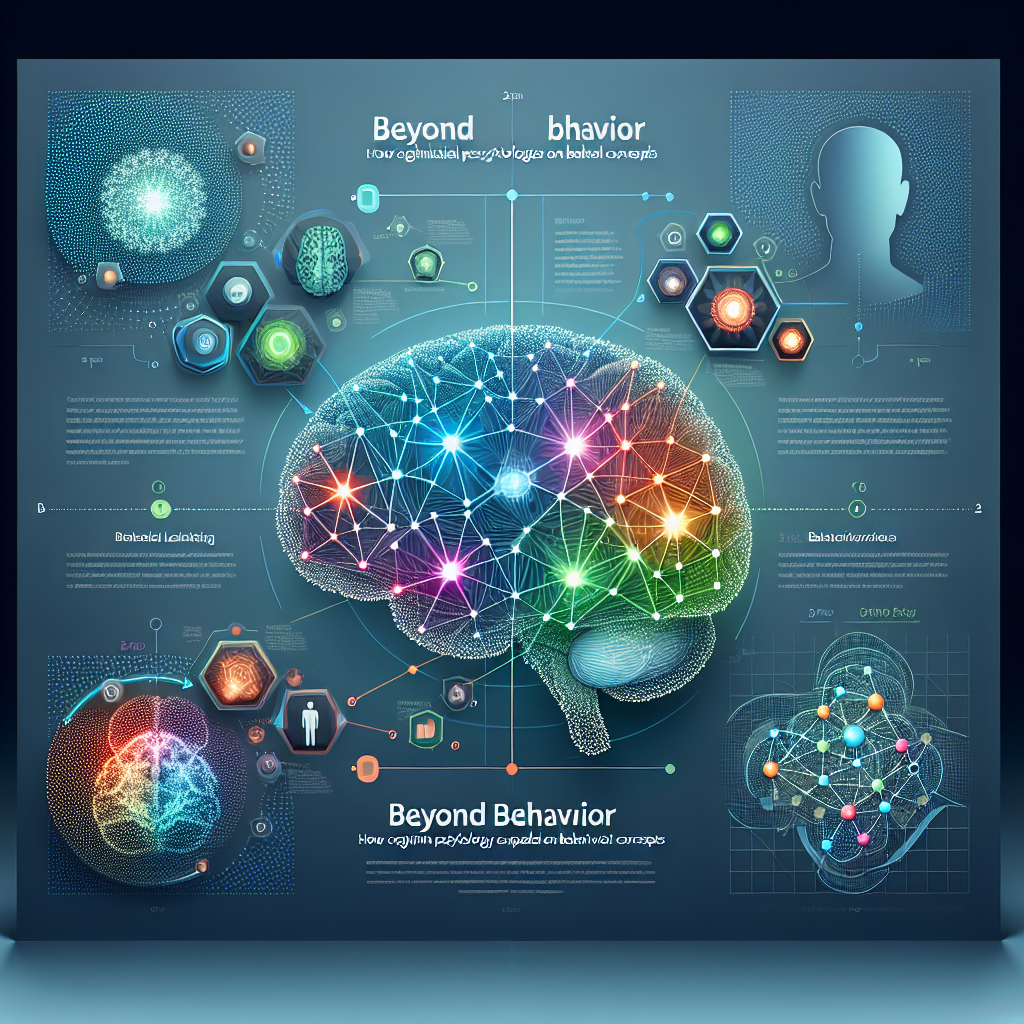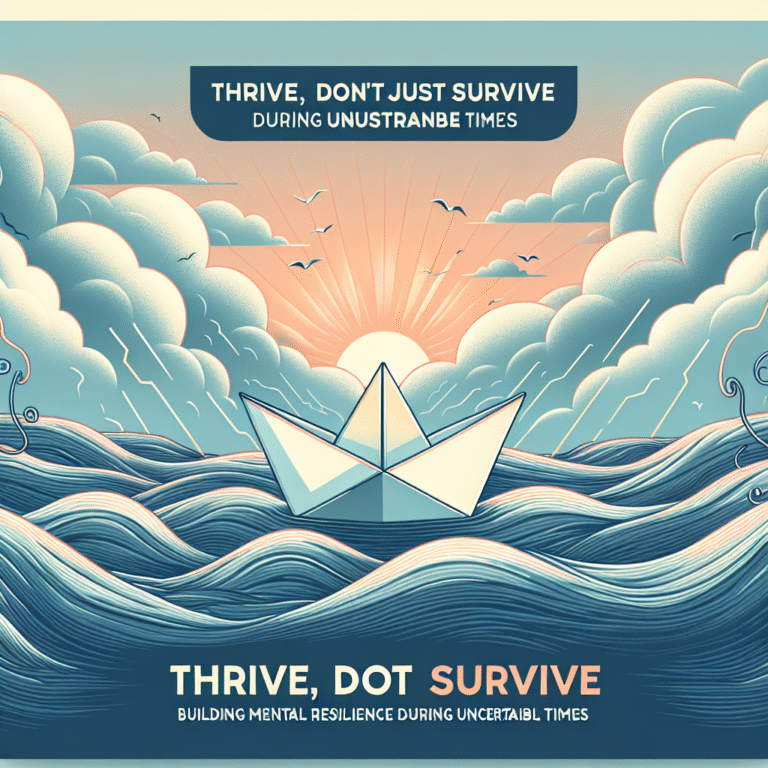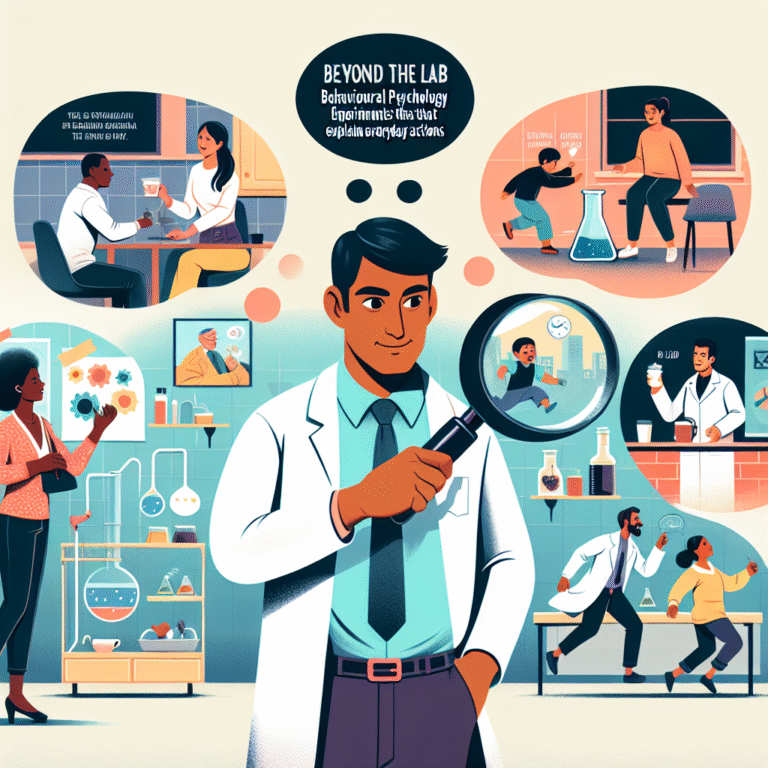
Beyond Behavior: How Cognitive Psychology Expands on Behavioral Concepts
In a world rife with complexity, understanding human behavior is essential not just for psychologists but for anyone looking to navigate interpersonal dynamics, enhance learning, or foster personal development. While behavioral psychology has rooted itself firmly in observable actions and stimuli, cognitive psychology invites us to go deeper, exploring the thoughts, beliefs, and mental processes that lend context to those actions. This article, Beyond Behavior: How Cognitive Psychology Expands on Behavioral Concepts, will delve into the ways cognitive psychology broadens our understanding of behavior, providing practical insights that apply to everyday life.
Introduction
Imagine a classroom where students respond to instructions but fail to grasp why those instructions matter. Alternatively, envision a workplace where team members work efficiently but lack understanding of their roles in the larger organizational vision. These scenarios are preventable. By looking beyond behavior alone and considering cognitive processes, we can cultivate environments that inspire engagement, comprehension, and success. Join us as we explore how cognitive psychology not only enhances behavioral concepts but also equips us with tools to foster meaningful change.
The Foundations: Behavioral and Cognitive Psychology
Understanding Behavioral Psychology
Behavioral psychology focuses on observable behaviors and the ways these behaviors can be conditioned through reinforcement and punishment. Rooted in the theories of figures like B.F. Skinner and John Watson, this school of thought emphasizes the influence of the environment on behavior. For example, a child may learn to share toys by receiving praise from parents when doing so, showcasing how external rewards can shape behavior.
Case Study: The Bobo Doll Experiment
Albert Bandura’s famous Bobo doll experiment is a prime illustration. In this study, children who observed adults behaving aggressively towards a doll were more likely to imitate that behavior when given the chance to play with the doll themselves. This experiment underscores the essence of behavioral learning—actions are often conditioned by observed behavior.
Diving Deeper: Cognitive Psychology
Cognitive psychology emerged as a response to the limitations of behavioral psychology. It introduces mental processes like perception, memory, and problem-solving, which help us understand why individuals act the way they do. Prominent figures like Jean Piaget and Aaron Beck contributed to this shift by focusing on internal cognitive processes.
Case Study: Cognitive Development in Children
Piaget’s stages of cognitive development illustrate why merely conditioning behavior is insufficient. For example, a six-year-old may follow rules in a game out of compliance but still struggle to understand the game’s underlying strategies. Cognitive psychology thus argues that knowing why we behave a certain way leads to more effective behavioral interventions.
Bridging the Gap: How Cognitive Psychology Expands Behavioral Concepts
Integrating Thought Processes and Behavior
The interplay between thought and action is complex. For instance, cognitive distortions—irrational thought patterns—can lead to negative behaviors. Recognizing this allows us to address the root causes of behavior rather than just the symptoms.
Example: Cognitive Behavioral Therapy (CBT)
CBT is a powerful therapeutic approach that combines cognitive and behavioral strategies. It’s used for various mental health issues, including anxiety and depression. By helping individuals identify and alter distorted thoughts, CBT promotes healthier behaviors. This method exemplifies how cognitive psychology expands on behavioral concepts, making it essential in therapy.
Emotional Influences on Behavior
Cognitive psychology also emphasizes the role of emotions. While behavioral models often overlook emotional states, understanding them can significantly enhance behavioral outcomes.
Case Study: Emotional Intelligence in the Workplace
Daniel Goleman introduced the concept of emotional intelligence (EQ), underscoring how understanding one’s emotions and those of others can improve workplace dynamics. For instance, employees with high EQ are better equipped to handle stress and conflict, which leads to healthier team interactions and increased productivity. This illustrates how cognitive aspects, like emotional awareness, deepen our understanding of behaviors.
Cognitive Biases: The Subtle Influencers of Behavior
Cognitive biases—systematic patterns of deviation from norm or rationality—play a critical role in decision-making and behavior. Recognizing these biases allows us to better understand the underlying cognitive aspects that influence behavior.
Common Cognitive Biases
- Confirmation Bias: The tendency to search for, interpret, and remember information that confirms one’s preconceptions.
- Anchoring Bias: Relying heavily on the first piece of information encountered (the “anchor”) when making decisions.
- Dunning-Kruger Effect: A cognitive bias in which individuals with low ability at a task overestimate their ability.
Chart: Cognitive Biases and Their Impact on Behavior
| Cognitive Bias | Description | Behavioral Impact |
|---|---|---|
| Confirmation Bias | Seeking information that confirms existing beliefs | Sticking to ineffective methods or opinions |
| Anchoring Bias | Relying on initial information | Poor decision-making based on incomplete data |
| Dunning-Kruger Effect | Overestimating one’s abilities | Avoiding necessary feedback or growth |
The Importance of Awareness
Understanding these biases enables us to cultivate more effective behaviors, particularly in settings like negotiation, education, and personal relationships. By recognizing what influences our decisions, we can actively choose to counteract these biases and promote more rational and constructive actions.
Applying Cognitive Principles: Real-World Strategies
Enhancing Educational Outcomes
In education, applying cognitive psychology can lead to more effective teaching methods. For instance, utilizing techniques such as spaced repetition—where information is reviewed over increasing intervals—harnesses cognitive principles for better retention.
Case Study: The Flipped Classroom Model
The flipped classroom model uses cognitive insights to shift learning dynamics. Instead of traditional lecturing, students engage with materials at home and use classroom time for discussion and application. Here, students take an active role, which deepens understanding and solidifies behavioral change, demonstrating how cognitive psychology expands on behavioral aspects of learning.
Transforming Workplace Behavior
Businesses can leverage cognitive psychology to enhance employee motivation and productivity. Understanding factors like intrinsic motivation and goal-setting can lead to improved performance.
Example: SMART Goals Framework
The SMART (Specific, Measurable, Achievable, Relevant, Time-bound) framework is grounded in cognitive understanding. Employees are more likely to succeed when they set clear and attainable goals. This method not only aligns behaviors with organizational objectives but also encourages personal accountability and growth.
Conclusion: Embracing a Holistic View of Human Behavior
As we’ve explored, the journey Beyond Behavior: How Cognitive Psychology Expands on Behavioral Concepts reveals the intricate tapestry of human cognition and action. By recognizing the interplay between thoughts, emotions, and observable behaviors, we enable a deeper understanding and more effective strategies for fostering positive change.
Actionable Insights
- In Education: Encourage active learning methods that require students to engage with material meaningfully.
- In Therapy: Consider cognitive-behavioral techniques to identify and address thought patterns that affect behavior.
- In the Workplace: Implement goal-setting frameworks that align with cognitive principles to motivate and empower employees.
By adopting this holistic perspective, we can navigate the complexities of human behavior more effectively, creating environments that foster growth, understanding, and collaboration.
FAQs
1. What is the primary difference between behavioral and cognitive psychology?
Behavioral psychology focuses on observable behaviors and their relationship to stimuli, whereas cognitive psychology examines mental processes that influence behavior.
2. How can cognitive psychology be applied in everyday life?
Understanding cognitive processes can help improve decision-making, manage stress, and enhance learning. Techniques derived from cognitive psychology, such as mindfulness, can be easily integrated into daily routines.
3. What role do cognitive biases play in decision-making?
Cognitive biases can lead to errors in judgment, influencing behaviors and choices. Being aware of these biases helps individuals make more rational decisions.
4. Can cognitive psychology positively impact education?
Absolutely! Cognitive psychology provides insights into effective teaching methods, such as spaced repetition and active learning, that enhance educational outcomes.
5. How does cognitive behavioral therapy work?
Cognitive behavioral therapy combines cognitive and behavioral strategies to help individuals identify and change negative thought patterns and behaviors, thereby improving mental health and well-being.
By exploring the concept of cognitive psychology alongside behavioral principles, we unlock a more comprehensive understanding of human behavior—one that ultimately can transform how we engage with ourselves and each other.

















